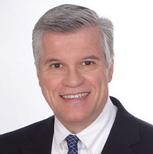At some point or another, every investment class stinks. (Not necessarily the one you took in college, although that one might have stunk, too. We’re talking here about asset, not instructional, classes.)
The stinky asset class du jour is bonds, as evidenced by the $80 billion outflow from bond mutual funds in June. Declarations of one sort or another by legions of bigwigs, including Ben Bernanke and Warren Buffett (“They’re terrible investments now”), caused and then exacerbated that recent disaster.
This is not good news for people who planned on living off their nest eggs by now. There’s almost no interest income to be had when 10-year Treasuries are in the mid-2% range (and even that’s up from a closing low of 1.66% on May 2). And when rates really begin to consistently rise over time, investors’ bond holdings will correspondingly decline in price. That makes a lousy situation lousier.
Alas, today is the inverse of the early 1980s, whence began a 30-year bull run in bonds. The inflation-choking, super high interest rate policy of then-Fed Chairman Paul Volcker inch-by-inch, year-by-year, gave way to lower and lower rates, a lovely balance of rising bond prices and delightfully satisfactory yields. Those were the salad days, and we thought they’d never end.
The folks who want sufficient income with capital preservation are faced with few obvious investment strategies today. Traditional income vehicles simply are not cooperating. Bank certificate of deposits stink. Treasurys stink. Ginnie Maes stink. Corporate bonds stink. Everything stinks.
And, of course, the “safer” an investment – government-guaranteed, for instance – the lower is its yield. So it stinks even more. In today’s world, that means it may well lag the inflation rate, unless you’re counting on inflation to stay below 2% to 3% for the duration of your investment. That’s not a likely prospect over the next 5 to 10 years, so is a “safe” investment really a safe investment?
Well, I guess it is if your definition of “safe” embraces a willingness to let inflation insidiously eat away at your principal. Otherwise, maybe you’re as well off to bury your moola in the backyard. At least you’d be able to go out in the dead of night and run your fingers through it.
But here’s another idea, and it won’t get your hands dirty: Consider pairing a high-yield, well-managed bond allocation with a high-yield, short-target-maturity bond allocation, as follows (all yields and NAVs as of 7/15/13):
DoubleLine Income Solutions Fund (DSL) – 16% Allocation
This is star bond manager Jeffrey Gundlach’s latest closed-end fund offering. It yields about 8% and sells at just a slight premium (0.13%) to its underlying assets. Good value and high yield.
DoubleLine Opportunistic Credit Fund (DBL) – 15% Allocation
Mr. Gundlach’s somewhat older closed-end fund also yields about 8%, although it sells at a 7.72% premium to net asset value (NAV). Therefore, it’s not quite the bargain that DSL is. But still, it’s co-managed by Jeffrey Gundlach.
Pimco Income Strategy II Fund (PFN) – 15% Allocation
Pimco has a mind-boggling number of fixed-income offerings, all, at least by reputation, influenced by the philosophies of legendary “bond king” Bill Gross. PFN is the pick here, though, because it yields about 9.2% while selling at roughly 2% below NAV. And it’s personally managed by Mr. Gross.
BlackRock Build America Bond Trust Fund (BBN) – 4% Allocation
BBN invests in Build America Bonds, taxable municipal securities issued by state and local governments to finance capital projects. The fund yields around 7.7% and sells at an attractive discount of about 6.6% to NAV.
Now, all of the above funds have intrinsic risks, resulting from conventional factors like credit quality, interest-rate (future increases) and valuation (premium to NAV). This is a real concern at this time, with rates seeming to have just one way to go (that would be “up”) over the intermediate and long term. That’s why investors should consider softening any such potential blows by allocating 50% of the portfolio to shorter-term bonds that are less sensitive to rate risk, as follows:
Guggenheim BulletShares 2014 High Yield Corporate Bond Fund (BSJE) – 50% Allocation
Here we have a target-maturity closed-end fund that matures in December 2014 and yields over 3%. Apart from its obvious yield advantage over conventional short-term mutual or exchange-traded funds, it offers the additional benefit of date-certain net asset protection. BSJE is scheduled to terminate on Dec. 31, 2014, meaning that the fund’s net assets (which will theoretically approximate the aggregate principal value of its holdings) will be distributed to shareholders at that time. Therefore, despite its high-yield nature, if interest rates were to soar before the end of 2014, the negative effect on this fund’s net asset value should increasingly lessen as the maturity date approaches.
The aim of composing half of the portfolio with BSJE is to offset the intrinsic higher risk of the other, more aggressive, 50%. One might alternatively stack this stabilizing “end of the barbell” with near-cash securities, like the Vanguard Short-Term Corporate Bond Index (VCSH), but BSJE offers a much better yield. As maturity gets closer, this 50% allocation would be systematically rolled over into 2015 or 2016 target-date funds.
We are buying insurance with this half of the portfolio, and, of course, there are no guarantees. But it’s not like we’re insuring the worst investors of all time. We are insuring the world’s two famous bond investors in Gross and Gundlach.
The weighted average yield of this portfolio is about 7%. At a time when a satisfactory return in an income portfolio is very hard to obtain, this appears to be a reasonable way to do so.
Photo Credit: moshelle_green
Disclosure: Prices and yields quoted are current as of July 15, 2013. The investments discussed are held in client accounts as of June 30, 2013. These investments may or may not be currently held in client accounts. Certain information contained in this article is based upon forward-looking statements, information and opinions, including descriptions of anticipated market changes and expectations of future activity. The manager believes that such statements, information and opinions are based upon reasonable estimates and assumptions. However, forward-looking statements, information and opinions are inherently uncertain and actual events or results may differ materially from those reflected in the forward-looking statements. Therefore, undue reliance should not be placed on such forward-looking statements, information and opinions.





